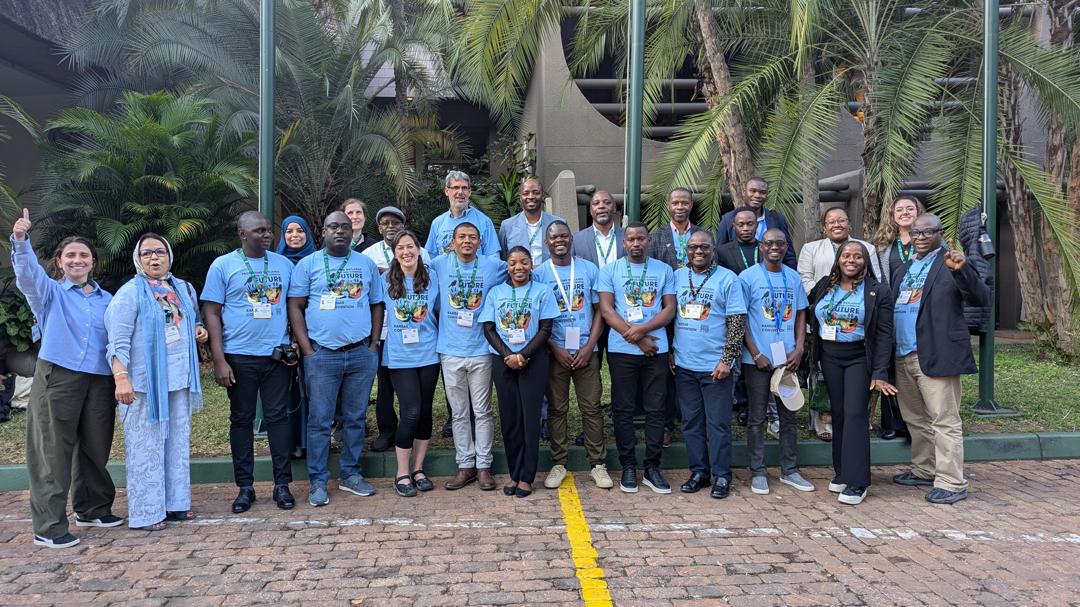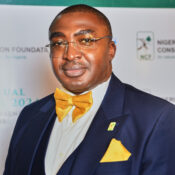
Victoria Falls to Nigeria: COP15 Ramsar Resolutions Set Bold Agenda for Wetlands Conservation
By Barr. Sangha Aturate
“Those in support, say ‘aye,’ those against, say ‘nay.’ The ayes have it.”
This was not the Nigerian Parliament or National Assembly but the plenary session at Victoria Falls, Zimbabwe, held from 23–31 July 2025, where over 3,000 participants — including delegates, scientists, Indigenous leaders, Civil Society Organizations, and Youth Champions — gathered to strengthen frameworks and commitments that will shape wetland policy and investment for the next triennium.
The “Mosi-oa-Tunya” — meaning The Smoke that Thunders — was a breathtaking reminder of nature’s beauty. The Government of Zimbabwe offered exceptional hospitality, with His Excellency President Emmerson Mnangagwa personally gracing the event and lending his full support to Ramsar COP15.
The Ramsar Secretariat was equally outstanding in planning and execution delivering a well-curated global conference. Special recognition goes to the Secretary-General, Dr. Musonda Mumba, for her leadership, grit, and resilience in steering this milestone event.
As a BirdLife Partner in Nigeria, the Nigerian Conservation Foundation (NCF) joined other BirdLife Partners from across the globe in a pre-COP Policy and Advocacy Workshop, focusing on Ramsar’s global priorities:
· Identification of critical wetland sites.
· Effective management of Ramsar sites.
· Mobilizing finance for conservation.
The workshop also highlighted insights from the timely Global Wetland Outlook 2025.
The Victoria Falls Declarations
Beneath the Smoke that Thunders, a strong political commitment was forged to mobilize resources for wetland protection including rivers, mangroves, peatlands, floodplains, and urban marshes.
From the Scientific and Technical Review Panel (STRP), technical outcomes were developed to strengthen wetland restoration and protection. Key resolutions adopted at COP15 include:
· Strengthening the link between Ramsar actions and the Kunming–Montreal Global Biodiversity Framework, integrating wetland targets into national biodiversity and climate plans while maintaining ecological integrity.
· Adoption of National Biodiversity Strategic Action Plans (NBSAPs) for the next 10 years.
· Increasing wetlands conservation financing by approximately 4.1%.
· Enhancing transboundary, flyway, and waterbird conservation, with improved coordination and monitoring.
· Setting stronger targets for wetland rehabilitation to reinforce their role in climate adaptation and mitigation.
· Institutionalizing youth participation in wetland conservation to ensure smooth knowledge transfer and long-term impact.
· Aligning resolutions with other multilateral environmental agreements (MEAs), including UNFCCC, CBD, CMS, and CITES.
· Reinforcing commitments to align with the Sustainable Development Goals (SDGs).
Key Plenary Moments
COP15 welcomed its own “Big Five” not wildlife this time, but global environmental leaders, including:
· Astrid Schomaker, Executive Secretary of the Convention on Biological Diversity (CBD)
· Ivonne Higuero, Secretary-General of the Convention on International Trade in Endangered Species of Wild Fauna and Flora (CITES)
· Amy Fraenkel, Executive Secretary of the Convention on the Conservation of Migratory Species of Wild Animals (CMS)
· Three young conservationists were honoured with the Ramsar Wetland Conservation Awards:
· Laura Gonzalez (Panama) — Wanda System for river-based waste capture.
· Iman Ebrahimi (Iran) — AvayeBoom Bird Conservation Society.
· Dayana Blanco Quiroga (Bolivia) — Wetland restoration with Indigenous communities at Lake Uru Uru.
A major announcement was the acceptance of Panama’s offer to host Ramsar COP16 in July 2028, reinforcing the commitment to global geographic rotation for the forum.
Side Events and Regional Collaboration
Side events hosted by IUCN, UNEP, BirdLife International, YEW, and other Ramsar Regional Initiatives addressed topics such as:
· Translating science into national policy.
· Innovative conservation financing.
· Peatland restoration.
· Flyway partnerships.
· Technology for conservation.
· Legal and policy mainstreaming.
· Youth leadership in conservation.
Daily regional meetings enabled country blocs to strategize, harmonize draft resolutions, and build regional momentum toward wetland conservation.
What COP15 Means for Nigeria
Representing Nigeria, Dr. Joseph Onoja, Director General of the Nigerian Conservation Foundation, met with Ramsar Secretary-General Dr. Musonda Mumba to strengthen Nigeria’s position on wetland conservation and explore global opportunities.
For Nigeria, the Flyway commitments will enhance cross-border collaborations on migratory birds and species dependent on West African wetlands. Resolutions on restoration targets and financing could accelerate mangrove and freshwater rehabilitation.
Nigeria also raised concerns on the need for updated wetland inventories and data — a resolution was passed to address this, enabling better planning and decision-making.
To maximize COP15 outcomes, Nigeria must:
· Leverage global funding to accelerate wetland restoration.
· Engage the private sector for conservation financing.
· Use Earth observation tools for mapping and sustainable wetland management.
· Incorporate traditional knowledge into conservation strategies.
· Integrate wetland conservation into Nationally Determined Contributions (NDCs), biodiversity plans, and SDG frameworks.
From Resolutions to Actions
Victoria Falls has set the stage for renewed ambition in wetland conservation. The challenge now lies in translating resolutions into policy reforms, actionable projects, and measurable impacts in every contracting country.
COP15 reminds us of the urgent need to restore wetlands for our common future. As the saying goes:
When we take care of nature, nature will take care of us.
Credits
Editor: Olusomi Oduguwa
Reviewers: Mr. Uchenna Achunine & Dr. Joseph Onoja



